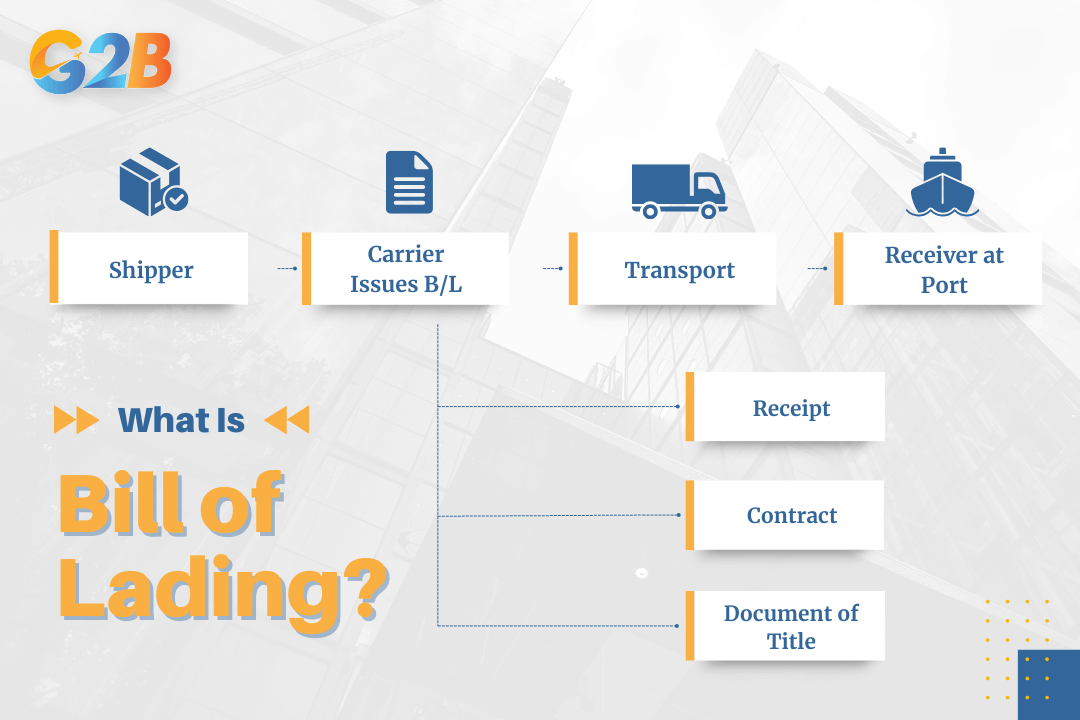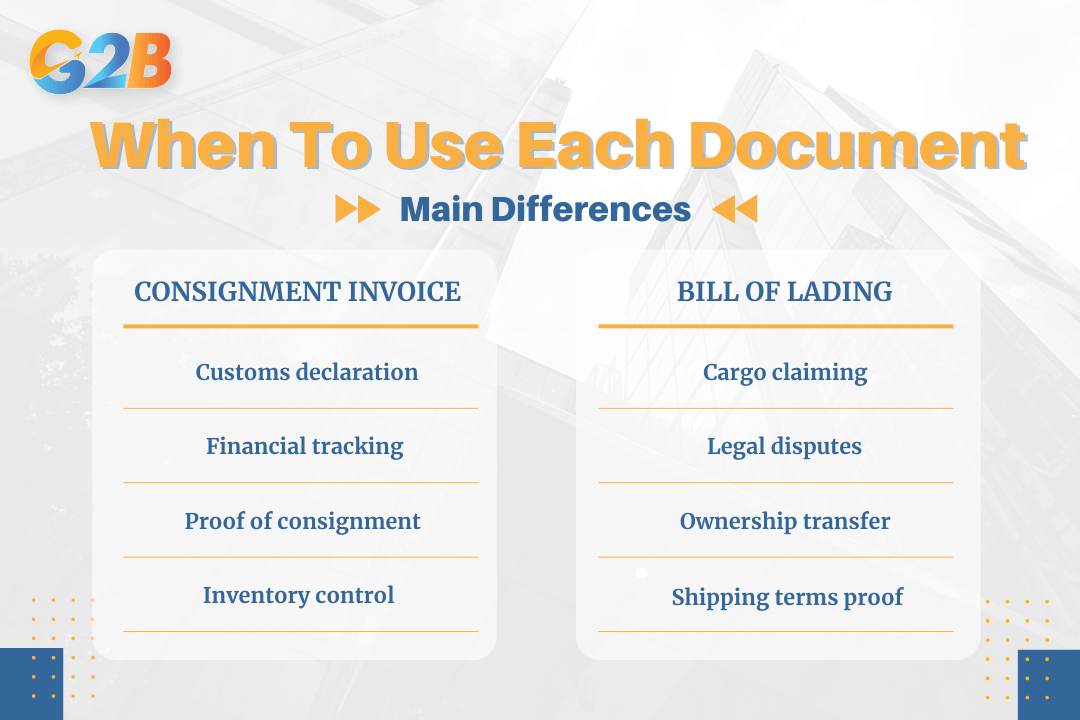Two of the most critical documents that frequently appear, yet are often misunderstood, are the Consignment Invoice and the Bill of Lading. While both are essential to the shipping process, they serve fundamentally different purposes. This article will demystify these two vital documents, providing a comprehensive and detailed comparison to equip everyone from seasoned logistics professionals to newcomers in international trade with the knowledge to navigate the complexities of shipping documentation.
This article outlines essential aspects of Bills of Lading to provide businesses with a clearer understanding of how they differ from consignment invoices. We specialize in company formation and do not offer legal or financial advice. For tailored strategies or compliance-related matters concerning consignment or shipping documents, please consult a qualified legal or logistics expert.
What is a consignment invoice?
A Consignment Invoice is a commercial document provided by the consignor (seller) to the consignee (buyer or agent), detailing goods sent for sale under a consignment agreement where the goods remain owned by the consignor until sold. This invoice serves important functions in business transactions and inventory management, primarily clarifying the details and conditions under which the goods are transferred. Unlike traditional sales invoices, consignment invoices reflect a unique arrangement where the risk and ownership of goods remain with the consignor until the final customer purchases the items.
The Consignment Invoice acts as a comprehensive record that outlines the terms of the consignment agreement, including the specific goods being consigned, their estimated values, commission structures, and payment terms. This document ensures that both parties understand their responsibilities and obligations throughout the consignment period. It serves as legal proof of the consignment arrangement and provides essential information for accounting, tax reporting, and customs clearance purposes when goods cross international borders.

A Consignment invoice is provided by the seller to the buyer or agent
What is a bill of lading?
A Bill of Lading is a legally binding document issued by a carrier to a shipper confirming the receipt of goods for transportation by sea. This fundamental document serves as a key legal instrument in maritime commerce, establishing the legal relationship between all parties involved in the shipping process. The B/L is essentially a contract that binds the carrier to transport goods from the port of loading to the designated destination port under specified terms and conditions.
The document represents a crucial component in international shipping, primarily in maritime transport, where goods traverse vast distances across multiple jurisdictions. A B/L simultaneously serves three primary functions: It acts as a receipt for goods, functions as a contract of carriage, and operates as a document of title. This tri-functional nature makes the Bill of Lading indispensable in facilitating secure, efficient, and legally compliant international trade transactions.

A Bill of Lading is issued by a carrier to a shipper confirming the receipt of goods
Main differences between a consignment invoice and a bill of lading
While both documents are integral to the shipping process, their roles are distinct. The consignment invoice is primarily a financial and commercial document focused on the value of the goods, whereas the bill of lading is a legal and logistical document centred on the transportation and title of the goods.
1. Different key components
Consignment Invoice: This document is focused on the commercial transaction and includes details necessary for customs and payment.
- Shipper (consignor) and consignee details: Identify the parties involved in the consignment agreement.
- Invoice number and date: Essential for tracking and record-keeping.
- Description of goods: Provide a detailed account of the items being shipped, including product specifications, model numbers, quantity, weight, and volume.
- The total value and currency of the transaction: Crucial for financial settlement and may support customs valuation, but the commercial invoice is the primary document for customs.
- Payment terms, due dates, and commission structures: Outline the financial arrangement between the consignor and consignee.
- Country of origin: Necessary for customs and trade regulation compliance.
- Incoterms (International Commercial Terms): Define the responsibilities of the seller and buyer for the shipment, and may be included depending on the consignment agreement.
- Special instructions or additional charges: Detail any specific handling requirements or extra costs.
- Duration of the consignment agreement: Specify the timeframe for the consignment arrangement.
Bill of Lading: This document centers on the logistics of the shipment and the legal contract of carriage.
- Names and addresses of the shipper, consignee, and carrier: Identify all parties involved in the transportation.
- Description of goods, including weight and dimensions: Provide the carrier with the necessary information for handling and stowage.
- Number of packages or units: Essential for verifying the quantity of the shipment.
- Shipping route and destination: Specify the agreed-upon path of transit.
- Vessel name and voyage number (for sea freight): Identify the specific vessel transporting the goods.
- Terms and conditions of transport: Outline the legal obligations and liabilities of the carrier.
- Date of shipment: Record when the goods were loaded for transport.
- Signature of the carrier or their agent: Confirm the carrier's receipt of the goods in good condition.
2. Purpose
The fundamental purpose of each document is where they most significantly diverge:
| Criteria | Consignment Invoice | Bill of Lading |
|---|---|---|
| Purpose | Financial record Customs valuation Proof of consignment | Contract of carriage Receipt of goods Document of title |
3. Time of issuance
The point at which these documents are created in the shipping timeline also differs.
- Consignment Invoice: This document is typically issued before or at the time of delivery of the goods to the consignee. It serves to inform the consignee and customs authorities of the details of the impending shipment.
- Bill of Lading: The B/L is issued when the goods are handed over to the carrier and loaded onto the transport vessel or vehicle. It signifies the official start of the transportation contract.
4. Legal function
The legal standing and implications of each document are distinct and critical to understand.
- Consignment Invoice: A consignment invoice is not a legally transferable document. It serves as a commercial record and for customs purposes, but does not grant the holder the right to claim or transfer ownership of the goods. It primarily evidences the commercial agreement between the consignor and consignee.
- Bill of Lading: The Bill of Lading holds significant legal value and can be a transferable document, allowing the transfer of ownership of the goods. Different types of B/Ls determine their negotiability:
- A Straight Bill of Lading is non-negotiable and designates a specific consignee who is the only party that can receive the goods.
- An Order Bill of Lading is negotiable and can be transferred to another party through endorsement, which is common in international trade where goods may be bought and sold while in transit.
- A Bearer Bill of Lading is also negotiable and allows the holder of the document to take possession of the goods. This ability to transfer title makes the Bill of Lading a cornerstone of international trade finance, often used as collateral in transactions involving letters of credit.
5. Content and information
The specific details included in each document are tailored to their respective purposes.
| Criteria | Consignment Invoice | Bill of Lading |
|---|---|---|
| Issuer | Seller / Consignor: The party that owns the goods and is sending them for sale issues the consignment invoice. | Carrier / Shipping Company: The entity responsible for transporting the goods issues the Bill of Lading. |
| Goods value | Yes (includes price and payment terms): A key feature of the consignment invoice is the detailed valuation of the goods and the terms of payment or commission. | Usually no (only describes goods and shipment details): While the B/L describes the goods, it typically does not state their commercial value. Its focus is on the physical attributes and logistical details of the cargo. |
| Payment terms | Included: The financial arrangements between the consignor and consignee are explicitly stated. | Not included: The B/L does not contain information about the payment for the goods themselves. |
| Logistics information | Limited: While it may mention shipping terms (Incoterms), the consignment invoice contains minimal logistical information compared to the B/L. | Detailed (shipping info, port, vessel, etc.): The B/L is rich with detailed logistical information, including the mode of transport, route, and specific vessel. |
6. Role in the import-export process
In the complex choreography of international trade, each document plays a specific and vital role.
- Consignment Invoice: This document is primarily an accounting and commercial document used under a consignment agreement. It is presented to customs authorities to declare the value of the goods for the assessment of duties and taxes. It is essential for the financial settlement between the trading partners and for maintaining accurate inventory records under a consignment agreement.
- Bill of Lading: The Bill of Lading is a linchpin of the physical and legal aspects of shipping. It serves as proof of receipt and shipment, which is crucial for all parties involved. The holder of the B/L (or a properly endorsed one) has the legal right to claim the cargo at the destination. Its role as a transferable document of title is fundamental to the transfer of ownership of the goods, often multiple times, while they are in transit across the globe.
7. When to use each document
Knowing the specific scenarios in which to utilize each document is key to a seamless shipping process.
Use a Consignment Invoice:
- During customs clearance to declare the value of goods: This is a supporting document for customs declaration, but the commercial invoice is primarily used for calculating import duties and taxes.
- For accounts payable and receivable processes: It facilitates the financial tracking and settlement of the consignment transaction.
- As proof of the consignment terms in international transactions: It formalizes the agreement between the consignor and consignee.
- For inventory and asset tracking purposes: It helps the consignor keep track of their goods held by the consignee.
Use a Bill of Lading:
- To claim goods at the destination port or warehouse: The consignee must present the B/L to take possession of the cargo.
- As evidence in transport disputes or insurance claims: It provides a legal record of the condition and quantity of goods at the time of shipment.
- To transfer ownership of goods while they are in transit: A negotiable B/L allows for the buying and selling of the goods before they reach their final destination.
- To verify the conditions under which the goods were shipped: It serves as a contractual agreement detailing the carrier's responsibilities.

Knowing when to use each document is key to a seamless shipping process
While both the consignment invoice and the bill of lading are indispensable documents in the realm of international trade, they operate in distinct spheres. The consignment invoice is fundamentally a commercial and financial instrument, providing the monetary details of the goods for customs and accounting purposes under a consignment arrangement. Conversely, the bill of lading is a powerful legal document that functions as a contract of carriage, a receipt of goods, and, most importantly, a document of title. A clear understanding of the unique components and applications of each document is a practical necessity for anyone involved in shipping, logistics, or company formation in Vietnam in the freight forwarding industry.


 Delaware (USA)
Delaware (USA)  Vietnam
Vietnam  Singapore
Singapore  Hong Kong
Hong Kong  United Kingdom
United Kingdom 
